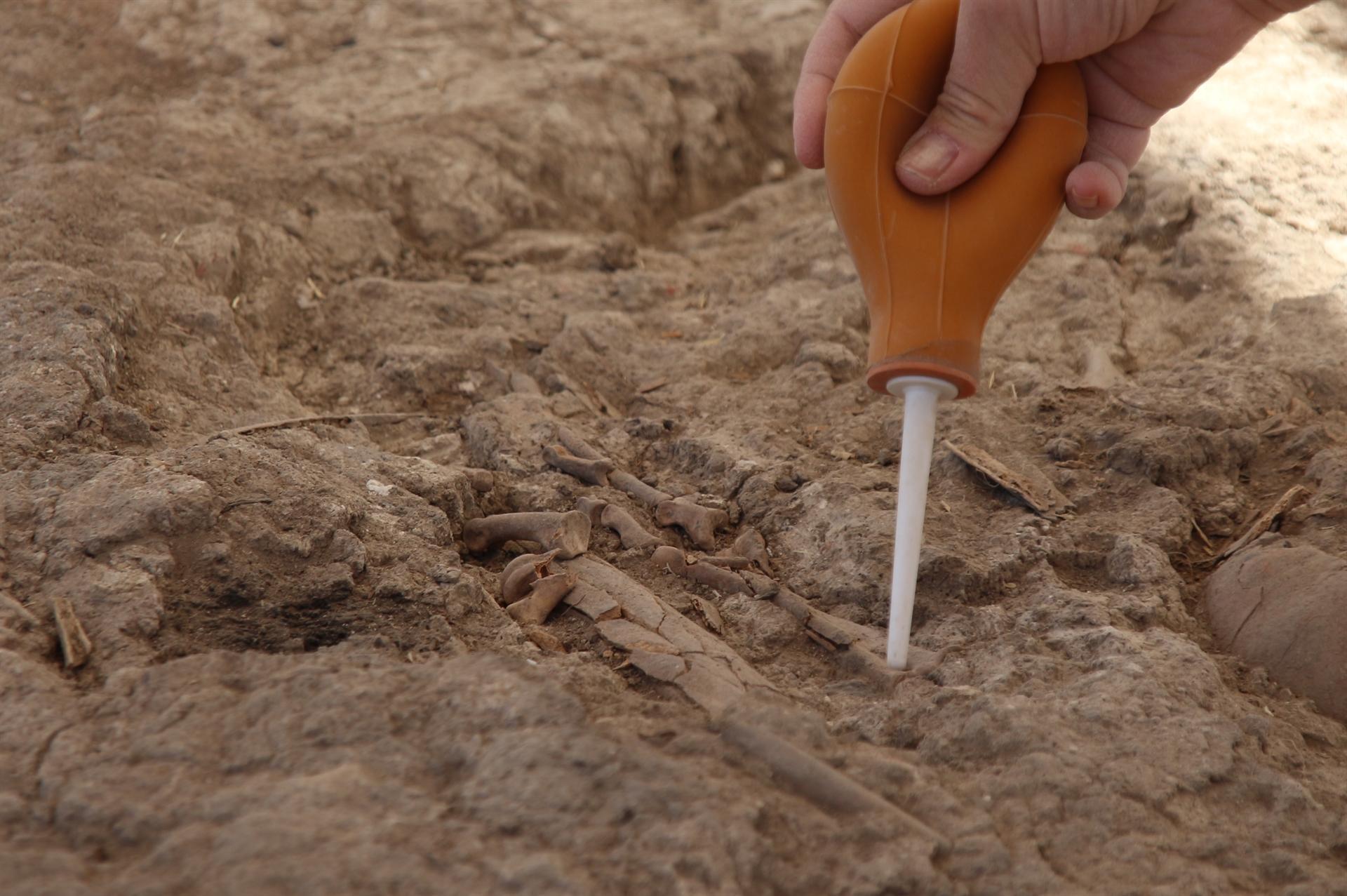
Çatalhöyük, one of the first urbanization models in Anatolia in Konya’s Çumra district and Turkey’s one of ancient sites in the UNESCO World Heritage List, continues to give new clues about the way of life of people 9,000 years ago.
Speaking to the state-run Anadolu Agency, Anadolu University’s faculty member Ali Umut Türkcan, who is also the head of Çatalhöyük Neolithic City excavations, said that the concept of “street,” one of the questions waiting to be answered in Çatalhöyük, started to come to light with the second neighborhood that was found recently.
Türkcan stated that in the light of the findings, they believe that there were many neighborhoods in the city. “We saw very clearly that a second neighborhood showed itself. We have an extraordinary house here, which attracted our attention especially with its wall paints, its size, much better quality floors and burials coming out from under the floors,” he added.
Türkcan pointed out that there are some differences in the house in the second neighborhood compared to the previous houses, adding, “We have two multiple burials in this neighborhood. In fact, in this burial, we noticed that the claw of a predatory animal, which may belong to a bear, was placed on the grave of this individual. We will work on this burial in the future. The world’s oldest wooden pieces were found at Çatalhöyük. The wooden piece found in the same house is a large example, but we think that it is a part of the stairs that we knew before but could not found. This is the first time we’ve seen something like this in years.”
Noting that they also found workshops in Çatalhöyük, Türkcan said: “A newly found workshop, especially related to paint, caught our attention. It is almost like a warehouse area. Ocher soils may be among the examples that tell us that paint was processed, along with the palette and related horns and some stone finds that we call different scrapers.”
Türkcan said the following about the predator claw found on the grave at home: “According to our expert, it is clear that this is a predator claw; we rarely find such things in graves. We know that marten claws were also put in the grave. If so, this is the second claw found. Obviously, the fact that it comes from the grave indicates that a different treatment was applied to the individual. But before that, we had found a bear seal. If we consider that there is a bear in some reliefs, we should think that together with the bull, the bear had a special place in Çatalhöyük society.”
Emphasizing that Çatalhöyük should be excavated more, Türkcan said, “This was the mega-settlement of its period; an urban phenomenon. I think that Çatalhöyük, which has yielded extraordinary finds this year, should be expanded within the possibilities and the excavations should continue.”
Türkcan stated that Çatalhöyük should be brought more into tourism and said: “Our project is not only focused on excavations. We are in pursuit of offering projects that will integrate the site management, especially with Konya and even Turkey, and better explain this place to the world. We also dream that Çatalhöyük will be an economic value that will have an impact on its surroundings. The interest shown by local authorities and municipalities made us happy.”